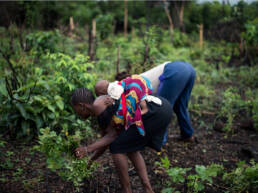We are familiar with the three-pillars formula for sustainability and the triple bottom line. However, what is more meaningful and challenging in building sustainability is building resilience. Building resilience for environmental sustainability is more complex than our imagination as we have little knowledge about nature and our environment. In addition, with the fastening rate of climate change, sustainability is no longer a discipline about creating a sustainable environment for nature but also a transdisciplinary between socio-ecology and social-economic. Hence, building resilience for sustainability is becoming more important so that we can adapt to unpredictable challenges.
Buy UK perfect Replica Rolex Daytona watches online. Swiss Made AAA Fake Rolex Watches UK Shop:www.rolexreplicaswissmade.com/Watches/Daytona.php
What is resilience?
We could interpret resilience from different perspectives. Holling defined ecological resilience as the amount of disturbance an ecosystem could withstand without changing self- organised processes and structures. Fundamentally, resilience indicates that the behaviour of dynamic systems deviates from equilibrium. Also, resilience is about how strong the ability to recover is and how quickly the damage returns.
Nevertheless, admitting climate change and Anthropocene impact, resources and yield are no longer predictable. Society needs to correspond to the production for sustainability within the thresholds based on market imperfections, limited resources, and limited knowledge. Thus, today, sustainability is about how we minimise or not produce irreversible adverse effects on the carrying capacity of the environment upon which it depends. Now, how can we tackle these challenges to become resilient for sustainability?

How to build resilience
Resilience could play different roles at different stages of transformation for sustainability. We must adapt and be flexible without forgetting that we are part of the environment/nature. Take the COVID-19 pandemic as an example. The pandemic is the turning point for humanity.
We learned that conserving nature is significant to sustaining the equilibrium of socio- ecology; we learned that the resilience of the local economy and community is vital for self- sustainability. While have we adapted to the crisis, are we being flexible in solving the disturbances? It is questionable. We are still over-dependent on global trade and mono- agriculture. To tackle the system’s complexity, we need problem and solution-oriented approaches that are stakeholder-centric and transdisciplinary in our resilience analysis and management.
In short, resilience is a relatively new concept for sustainability and conservation. Sustainability and resilience can be viewed as two concepts, while we can use resilience to help us achieve sustainability. It helps us reflect on which stage we are in the process toward sustainability. It helps us to access things from a transformational perspective. We shall not purely focus on building resilience and sustainability for the environment, while it is necessary to consider the social and economic aspects. Most significantly, it is to build resilience on self, to adapt and sustain as a human, as we are part of nature.



